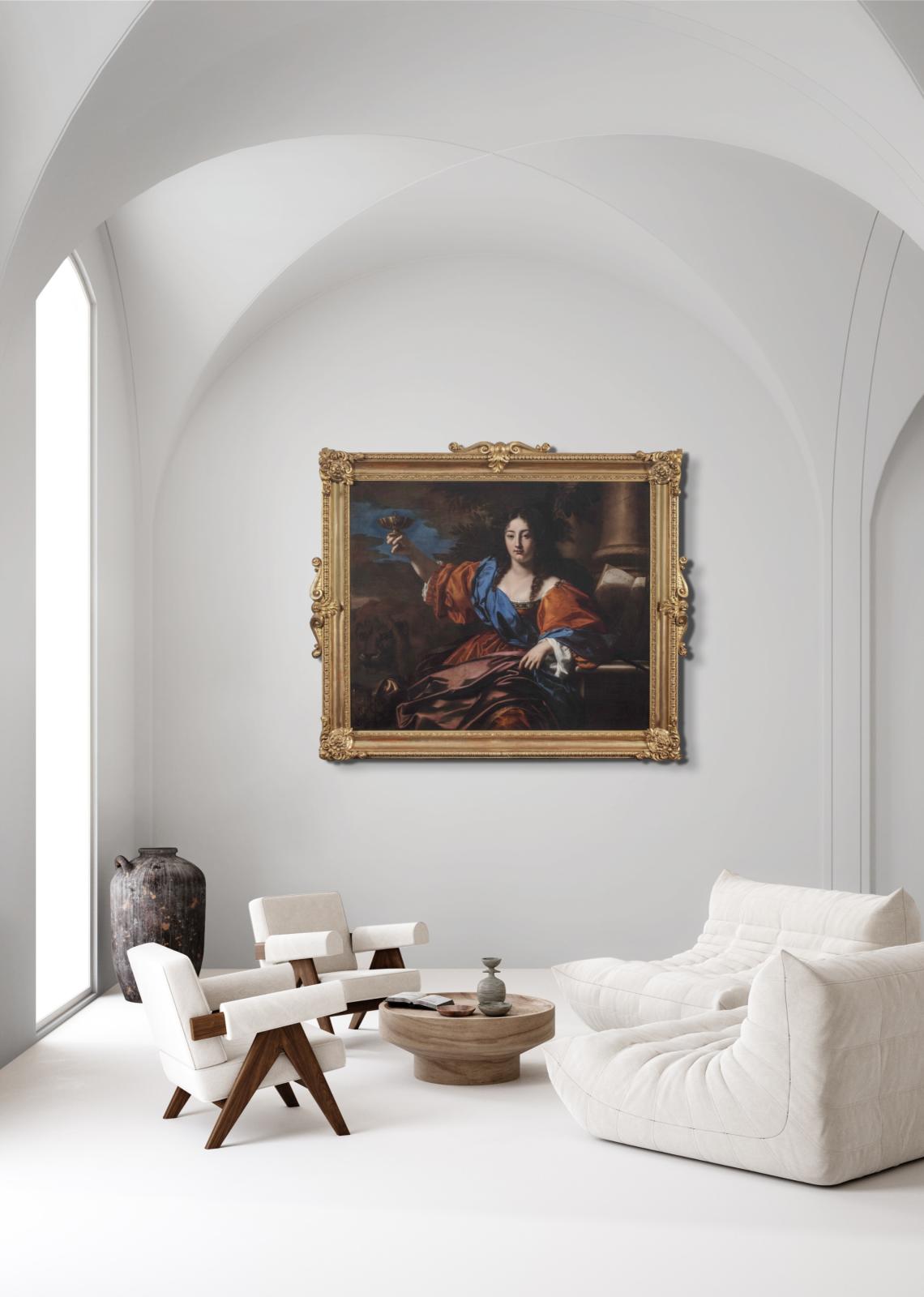artist
Nicolas Régnier initially trained in Antwerp under Abraham Janssens, a painter of Flemish origin who studied in Rome and was among the first followers of Carravaggio. As early as 1667 in Rome, Régnier saw firsthand the moody chiaroscuro and dynamic compositions of Caravaggio and his followers, which would significantly shape his artistic style. In this period Regnier also residied in Venice and Bolognia where he would expand his activities to dealing in antiques and art by others.
Régnier’s work primarily revolved around genre scenes, religious subjects, and portraits. He became known for his ability to convey human emotion and narrative depth, often employing a rich palette and dramatic lighting to enhance the mood of his compositions. His works reflect a blend of Italian Baroque techniques and Flemish traditions, creating a unique fusion that appealed to both local and international audiences.
provenance
David Alexander Robert Lindsay, 28th Earl of Crawford and 11th Earl of Balcarres
David Alexander Robert Lindsay sale, Christie’s, London, October 11, 1946, lot 56 (as by Domenichino)
Lord Overstone, Wickham Park, Bromley
Baron di Pauli von Treuheim
Baron di Pauli von Treuheim sale, Hampel, Munich, June 24, 2005, lot 363
Old and Modern Masters, Ltd., London from whom acquired by
Luigi Koelliker, London
Luigi Koelliker sale, Sotheby’s, New York, January 29, 2009, lot 37
Robilant & Voena, London, Milan, Paris & New York, from whom sold to
Private Collection, Florida, circa 2014 until the present time
exhibitions
London, Robilant & Voena, Dutch and Flemish Caravaggesque Paintings from the Koelliker Collection, November 28 – December 19, 2007
literature
M. Pulini, Diacromie. Dialogie e Derive. Collezione Koelliker, London, 2006, unpaginated, illustrated
Annick Lemoine, “Allégorie de la Force” in Nicolas Rėgnier, Arthena, Paris, 2007, pp. 153-154, 312-313, no. 153, illustrated (in the Koelliker Collection)
Annick Lemoine, “Circe or Allegory of Fortitude” in French, Dutch and Flemish Caravaggesque Paintings from the Koelliker Collection, London, 2007, pp. 54-55, no. 15, illustrated













